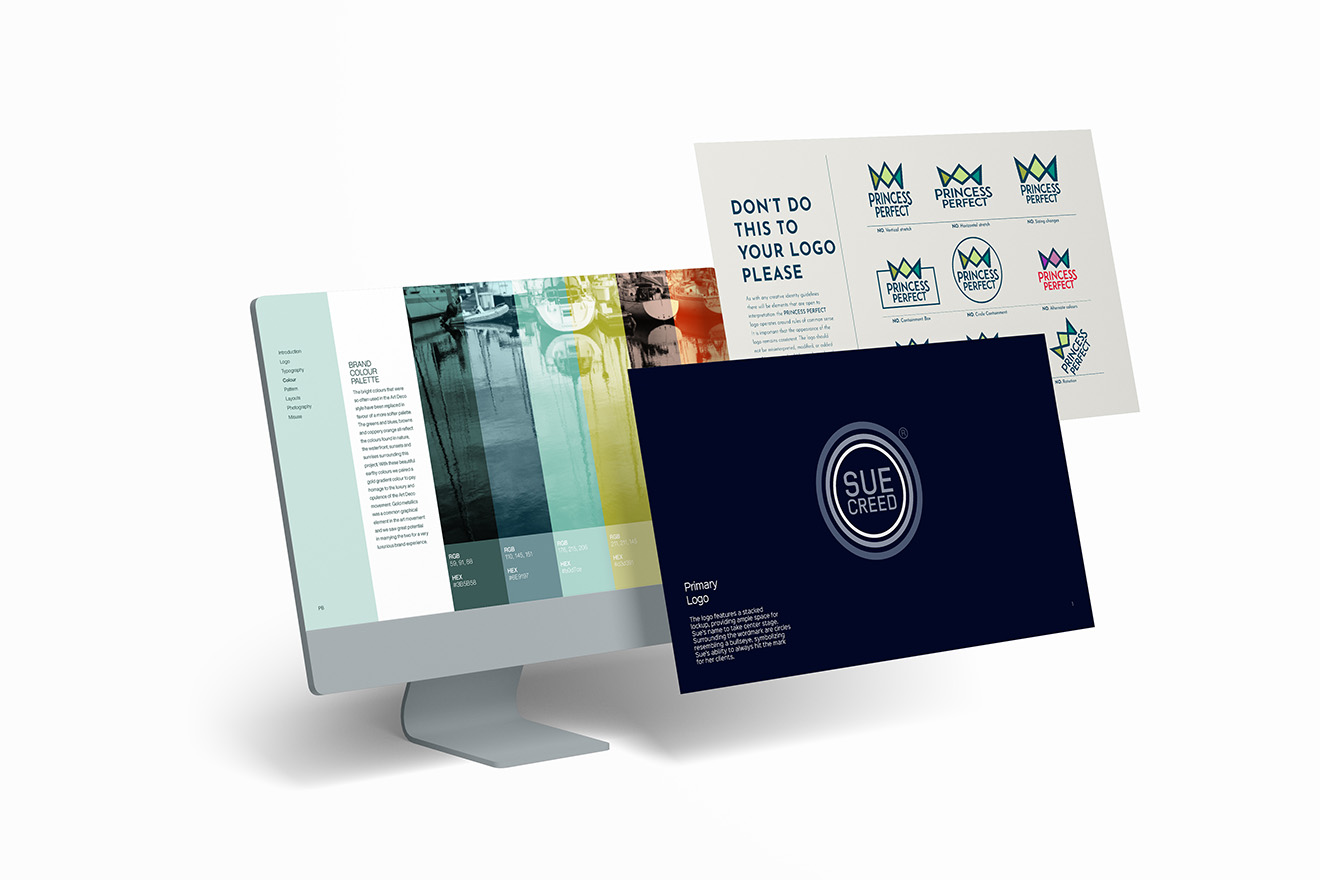How to Update Your Brand Style Guide for the Digital Age
Posted on Thursday January 18, 2024

The importance of a brand’s online presence cannot be overstated. Traditional branding strategies have shifted dramatically, necessitating a digital-first approach. This evolution calls for a re-evaluation and update of your brand style guide to ensure it resonates with today’s digital-savvy audience.
Understanding Digital Brand Style Guides
A digital brand style guide transcends traditional branding elements like logos and taglines. It’s a comprehensive framework that dictates how your brand is presented and perceived across various digital platforms. It’s about delivering on your brand promise, consistently and effectively, no matter the medium. Here are a few of the key concepts and components of digital brand style guides.
Visual Identity
The visual identity of a brand is its face in the digital world. In the age of digital media, this identity needs to be adaptable, scalable, and recognizable across various platforms.
- Adaptability: Brands must ensure their visual elements (like logos, fonts, and images) are adaptable to different digital formats, from websites to social media.
- Scalability: Visual elements should maintain their impact and clarity whether they are on a large desktop screen or a small mobile device.
- Consistency: Keeping visual elements consistent across all platforms strengthens brand recognition and credibility.
Responsive Logo Design
The concept of a ‘responsive logo’ has become pivotal for brands. A responsive logo is one that adapts to different sizes, platforms, and contexts while maintaining its essence and recognizability. This flexibility is crucial in an era where your logo must work as effectively on a tiny smartphone screen as it does on a large billboard.
Why Responsive Logos Matter
- Versatility Across Devices: With an array of devices at our disposal, from smartphones to tablets and laptops, a logo must retain clarity and impact regardless of screen size or resolution.
- Consistency in Branding: A responsive logo ensures that your brand is consistently represented, whether it’s viewed on a desktop browser, a mobile app, or social media platforms.
- User Experience Enhancement: A well-designed responsive logo contributes positively to the user experience. It demonstrates a brand’s attention to detail and commitment to providing a seamless experience across all touchpoints.
Web Typography and Color Psychology in Digital Media
Typography and color are critical in conveying your brand’s message and mood on digital platforms.
- Typography: Choose fonts that are easy to read on screens, scalable, and compatible with different devices and browsers. Web typography should be legible, accessible, and reflect your brand’s personality.
- Color Psychology: Colors evoke emotions and associations. In digital media, it’s crucial to choose colors that not only align with your brand’s values but also display consistently across various devices. Understand how different colors are perceived and make sure they align with the message and tone you want to convey.
- Accessibility: Ensure that your color choices are accessible to all users, including those with visual impairments. Contrast ratios should be considered to guarantee readability and inclusiveness.
The Role of Social Media Branding in Your Style Guide
A well-crafted social media branding strategy within your style guide serves as the DNA for your brand’s online personality. It dictates the tone of voice, visual elements, and the manner of engagement with the audience. Imagine scrolling through a feed and instantly recognizing a post without seeing the name – that’s the power of strong social media branding. According to Instagram, 90% of their users follow at least one business, underscoring the platform’s role in shaping brand perceptions.
Importance of Consistent Branding Across Various Digital Channels
A consumer’s journey with a brand often traverses multiple platforms. From Instagram posts to YouTube videos, the message and aesthetic should be unmistakably consistent. A style guide that ensures uniformity across these channels builds a cohesive brand image, enhances recognition, and reinforces trust. Statistics reveal that consistent branding across all platforms can increase revenue by up to 20%. Every post, blog, or e-commerce description should reflect your brand’s ethos and aesthetic, creating a seamless narrative that resonates with your audience.
User Experience (UX) Design and Its Impact on Branding
User Experience (UX) design is a vital component of your brand’s digital interaction with users. Integrating UX principles into your brand style guide ensures that every digital touchpoint is intuitive, enjoyable, and memorable. It’s not just about aesthetics; it’s also about how easily users can navigate and achieve their goals.
Mobile-First Design: Tailoring Your Brand for Mobile Users
With over half of worldwide internet traffic coming from mobile devices, a mobile-first design is no longer a luxury but a necessity. Your style guide should prioritize mobile user interfaces, ensuring that logos, typography, and content are not just responsive, but originally conceived for smaller screens. This ensures that the mobile user’s experience is not an afterthought but a primary consideration, reflecting the current usage trends.
Implementing Best Practices
- Understand Your Audience: Knowing your audience’s preferences is critical. Tailor your brand style to match their expectations and behaviors.
- Regular Updates: Stay updated with the latest digital trends. Regularly refresh your brand style guide to keep it relevant and engaging.
- Employee Advocacy: Encourage employees to become brand ambassadors. Their engagement on social media can significantly increase brand recognition and authenticity.
- Feedback Loop: Actively seek and incorporate feedback from customers to refine your brand style guide.
- Training: Ensure all team members understand and can effectively apply the brand style guide.
Conclusion
As the first touchpoint for most consumers is online, brands must prioritize digital channels in their branding efforts. This means designing with digital platforms in mind from the outset, rather than retrofitting traditional branding for the digital space.
Now is the time to embrace the digital evolution. Adapt your brand style guide to harness the strengths of digital trends and platforms, ensuring your brand not only survives but thrives in the digital age. Contact Madhouse Advertising, an award-winning advertising agency in Toronto, for expert guidance and innovative solutions in updating your brand style guide for the digital era.
Email: info@madhouseinc.ca
Phone: (647) 578-6988
ALL POSTS


